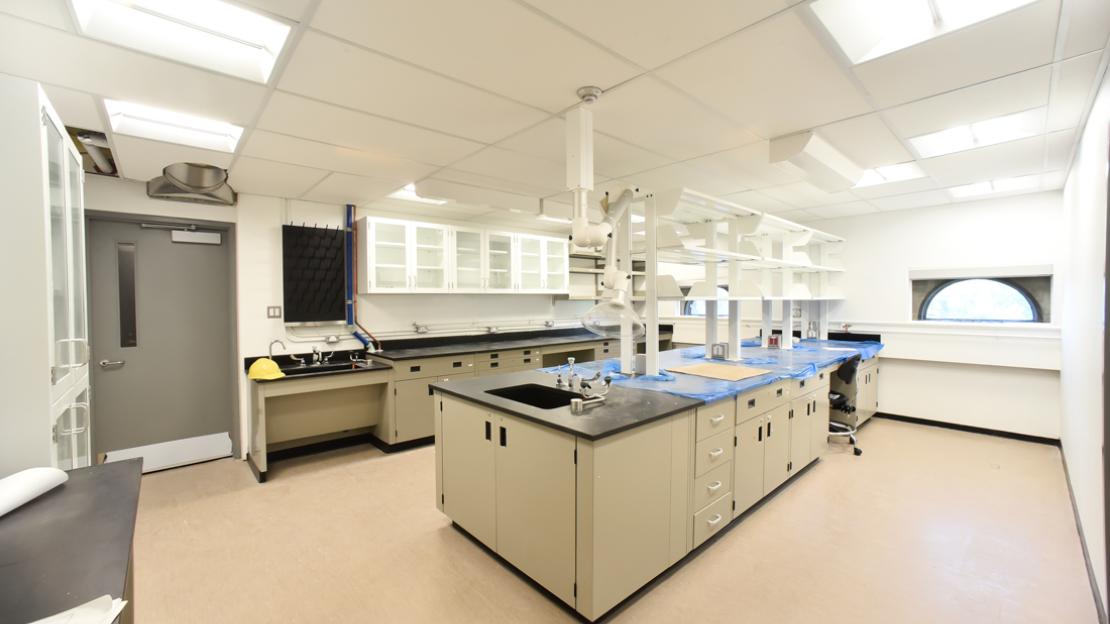A project to upgrade and build new lab space in U of T Scarborough’s original building will nurture a range of cutting-edge research – from neuroscience and plant biology, to exploring the evolutionary roots of early primates.
The campus received a total of $18.3 million in matching funds as part of the SIF program to upgrade facilities in the Science Wing of the Andrews Building including 20 labs, the campus vivarium, and to support improvements to air quality and energy efficiency.
“While the Andrews Building has held up remarkably well for more than 50 years, in some respects it was showing its age,” says Jennifer Adams Peffer, U of T Scarborough’s campus architect.
“These upgrades will address some long-standing concerns, but more importantly will create a higher quality experience for those who work, study and pass through this architecturally significant building.”
All of the projects are “significantly completed” notes Adams Peffer, adding that many labs are either occupied or will be fully occupied soon.
The funding program was announced in June 2016 as part of the Lab Innovation for Toronto (LIFT) project, where $189.9 million in funding was pledged to upgrade research facilities across all three U of T campuses. (U of T contributed $91.8 million, while the federal and provincial governments contributed $83.7 million and $14.3 respectively)
The federal portion came from the Strategic Investment Fund (SIF), a $2 billion program aimed at modernizing research facilities across the country.
The SIF projects have provided 23 faculty researchers and more than 80 postdoctoral and graduate students with new or significantly upgraded lab spaces at U of T Scarborough. Meanwhile, 34 faculty researchers will also benefit from environmentally upgraded offices and research spaces.
“This project has significantly enhanced the research environment for our faculty and graduate students by improving the safety, functionality and research capability of these labs,” says Professor Marc Cadotte, U of T Scarborough’s Interim Vice-Principal of Research.
“A state-of-the-art facility is an important ingredient for cutting-edge research. It’s exciting to see the changes that have taken place and I’m eagerly awaiting to see the research that will come out of these facilities in the years to come.”
The upgrades to the Science Wing include improvements to the air handling, lighting and electrical systems, while in the labs there have been upgrades to the benches, fixtures, fume hoods and research equipment. Some concrete remediation work also took place.
The funding also helped cover replacement of single glazed windows with more efficient thermal glazed windows. The funding will also allow the opportunity to bring back skylights to the south-facing laboratories – an original architectural feature of the building – that were covered up in the past due to snow and ice accumulation.
“What’s fantastic about our new lab is how it will foster cohesion among graduate students,” says Mary Silcox, associate professor in the Department of Anthropology and and Vice-Dean, Graduate.
Silcox, whose lab focuses on the early evolution of primates, has a large group of grad students and postdocs that collaborate on much of their research.
“The improved facilities, open space and the abundance of natural light are all meant to promote collaboration,” she adds.
The departments included in the SIF projects are biological sciences, psychology, anthropology, health studies, and the Centre for French and Linguistics, which used part of the SIF funds to open six sound-proof booths to conduct research.
For Assistant Professor Maithe Arruda-Carvalho from the Department of Psychology, having a permanent wet lab space and access to the vivarium will be instrumental for her research, which looks at the maturation of brain circuits and its role in contributing to the onset of mental illness.
“Without this project I wouldn’t be able to do my work, so it was absolutely crucial and vital to establishing my research program.”
